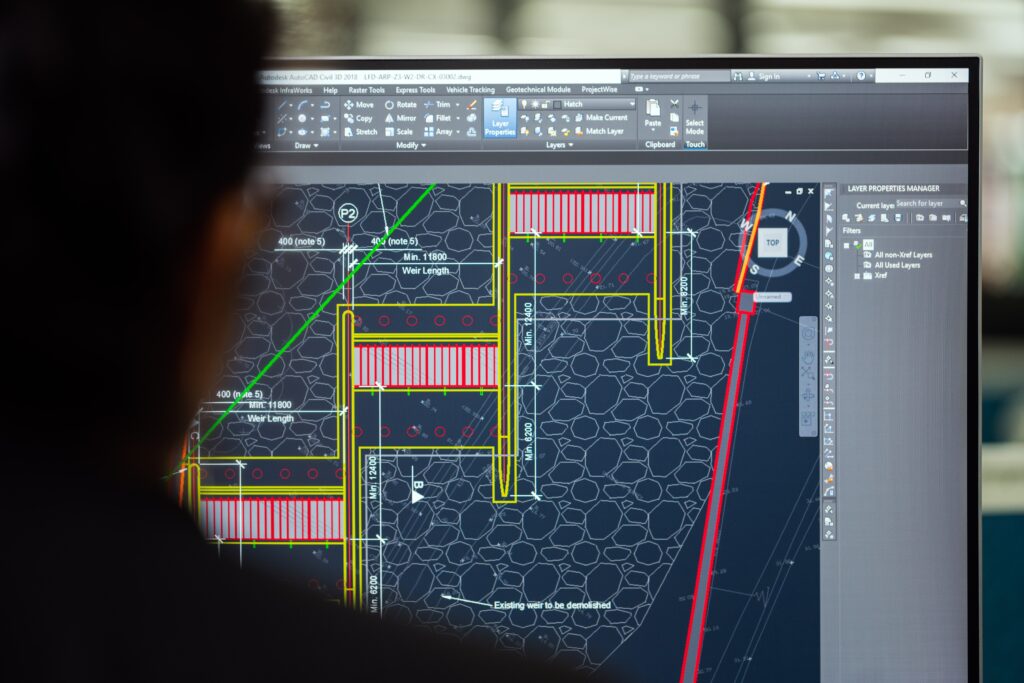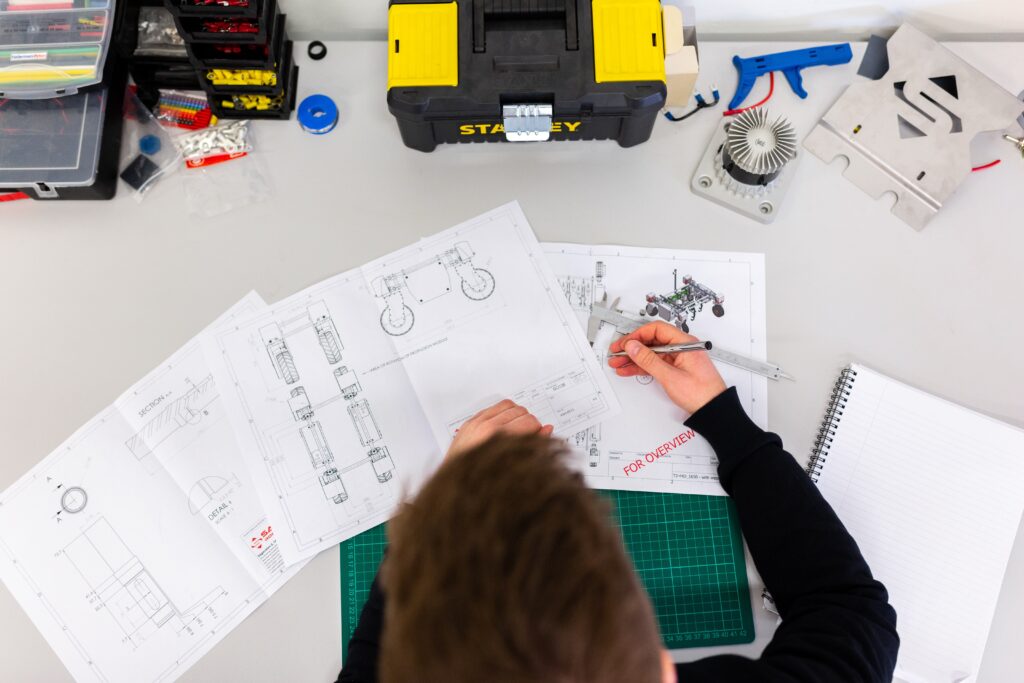
Are you looking to gain a solid understanding of engineering project management? Look no further than “Understanding the Basics of Engineering Project Management.” This comprehensive guide is designed to help you navigate the intricate world of engineering project management with confidence and ease. Whether you are a seasoned professional or new to the field, this product provides valuable insights, practical tips, and industry best practices that will enhance your project management skills and ensure successful project outcomes. Get ready to elevate your engineering project management knowledge and take your career to new heights.

Definition of Engineering Project Management
Engineering project management is the discipline and practice of planning, organizing, and controlling resources to successfully complete engineering projects. It involves the application of project management principles and techniques specifically tailored to engineering projects, which can range from the development of new technologies to the construction of infrastructure or the design of complex systems. Engineering project management ensures that projects are delivered on time, within budget, and to the satisfaction of stakeholders.
Importance of Engineering Project Management
Engineering project management plays a crucial role in ensuring the successful completion of engineering projects. It provides a structured approach to project execution and helps to minimize risks, improve efficiency, and achieve project objectives. Without proper project management, engineering projects can face numerous challenges, such as cost overruns, schedule delays, scope creep, and quality issues.
By applying project management principles, engineering project managers are able to effectively plan, execute, and control projects, resulting in improved project performance, increased stakeholder satisfaction, and successful project outcomes. They coordinate the efforts of project team members, manage project constraints, and align project outcomes with the organization’s strategic goals. Engineering project management also facilitates effective communication among project stakeholders, promotes collaboration, and ensures that projects are delivered on time and within budget.
Key Concepts in Engineering Project Management
Project Scope
Project scope defines the boundaries and extent of work required to successfully complete an engineering project. It includes the project’s objectives, deliverables, and the specific activities and tasks that need to be performed. Clearly defining the project scope is essential to ensure that all stakeholders have a shared understanding of what is required to achieve project success.
Project Objectives
Project objectives are the specific, measurable, achievable, relevant, and time-bound (SMART) goals that the engineering project aims to accomplish. These objectives guide the project team throughout the project lifecycle and enable them to prioritize activities, allocate resources, and measure project performance against the desired outcomes.
Project Stakeholders
Project stakeholders are individuals or groups who have an interest or potential impact on the engineering project. They include project sponsors, clients, end-users, regulatory authorities, suppliers, and members of the project team. Identifying and managing stakeholders is crucial to ensure their expectations are met, their concerns are addressed, and their support is gained throughout the project.
Project Constraints
Project constraints are the limitations and restrictions that can impact the execution of an engineering project. They can include factors such as budgetary limitations, resource availability, time constraints, technical requirements, and regulatory constraints. Effective management of project constraints is essential to ensure that the project is completed successfully within the defined boundaries.
Project Deliverables
Project deliverables are the tangible or intangible outputs that the engineering project is expected to produce. They can include reports, designs, prototypes, software, infrastructure, or any other final product or result. Clearly defining and managing project deliverables is vital to ensure that the project meets the agreed-upon objectives and satisfies the needs of the stakeholders.
Roles and Responsibilities in Engineering Project Management
Project Manager
The project manager is responsible for the overall planning, execution, and control of the engineering project. They are accountable for delivering the project’s objectives within the defined constraints of scope, time, cost, and quality. The project manager leads and coordinates the project team, communicates with stakeholders, manages project risks, resolves conflicts, and ensures that the project is progressing as planned.
Project Team Members
Project team members are individuals who work collectively to achieve the project’s goals. They contribute their specific expertise, skills, and knowledge to the project and are responsible for carrying out the various tasks and activities assigned to them. Effective collaboration, communication, and coordination among project team members are essential to ensure the successful completion of the engineering project.
External Stakeholders
External stakeholders are individuals or entities outside of the project team who have an interest or influence on the engineering project. They can include clients, end-users, regulatory bodies, suppliers, contractors, and the general public. Engaging and managing external stakeholders is crucial for ensuring that their requirements are understood, their concerns are addressed, and their support is gained throughout the project lifecycle.

Project Initiation Phase
Defining the Project
In the project initiation phase, engineering project management begins with the definition of the project’s scope, objectives, and key deliverables. This phase involves understanding the requirements, constraints, and success criteria of the project. It includes conducting preliminary studies, feasibility assessments, and aligning the project with the organization’s strategic goals.
Performing Feasibility Studies
Feasibility studies are conducted to assess the technical, economic, operational, and legal viability of an engineering project. These studies evaluate potential risks, benefits, and alternatives to determine whether the project is feasible and worth pursuing. Feasibility studies help in making informed decisions, identifying potential challenges, and estimating the overall project feasibility and viability.
Conducting Risk Assessment
Risk assessment involves identifying, analyzing, and prioritizing risks that may affect the successful completion of the engineering project. It includes evaluating potential threats and opportunities, assessing their potential impacts, and developing strategies to mitigate or exploit them. Risk assessment helps project managers anticipate and proactively manage risks, reducing the likelihood of negative project outcomes.
Project Planning Phase
Creating a Project Plan
In the project planning phase, a detailed project plan is developed that outlines the activities, milestones, timelines, and resources required to complete the engineering project. The project plan serves as a roadmap for the project team and provides a baseline for monitoring and control. It includes a breakdown of the project into manageable tasks, assignment of responsibilities, and the development of a project schedule.
Developing a Work Breakdown Structure (WBS)
A work breakdown structure (WBS) is a hierarchical decomposition of the engineering project’s scope into smaller, more manageable work packages. The WBS breaks down the project into deliverables, sub-deliverables, and work packages, enabling better estimation, assignment of resources, and tracking of progress. The WBS provides clarity and structure to the project, facilitating effective project planning and execution.
Creating a Project Schedule
A project schedule is a timeline that outlines the start and end dates of each activity and task in the engineering project. It helps project managers allocate resources, estimate project duration, and identify critical dependencies. The project schedule allows for better project coordination, ensures timely completion of project milestones, and helps in identifying potential bottlenecks and risks.
Identifying Project Resources
Identifying project resources involves determining the personnel, materials, equipment, and facilities required to successfully complete the engineering project. It includes assessing the availability and suitability of resources, allocating resources to project tasks, and planning for resource dependencies. Identifying and securing the necessary resources is essential for ensuring smooth project execution and minimizing project delays.
Estimating Project Costs
Estimating project costs involves determining the budget required to complete the engineering project. It includes estimating the cost of labor, materials, subcontractors, equipment, and other expenses. Accurate cost estimation is crucial for budget planning, resource allocation, and cost control throughout the project. It helps in managing project finances, avoiding cost overruns, and ensuring that the project remains financially viable.

Project Execution Phase
Managing Project Team
In the project execution phase, the project manager is responsible for effectively managing the project team. This includes assigning tasks, providing guidance and support, monitoring progress, and resolving any issues or conflicts that arise. Effective project team management involves fostering collaboration, ensuring clear communication, and motivating team members to perform at their best.
Monitoring and Controlling Project Progress
Monitoring and controlling project progress involves tracking the actual performance against the planned objectives, milestones, and deliverables. It includes regularly collecting project data, comparing it to the project plan, and identifying any deviations or variances. By monitoring project progress, project managers can identify potential issues early on, take corrective actions, and ensure that the project stays on track.
Implementing Change Control
Change control involves managing and documenting changes to the engineering project’s scope, objectives, or deliverables. It ensures that any changes are properly assessed, approved, and incorporated into the project plan. Effective change control minimizes the risk of scope creep, ensures that changes are aligned with project objectives, and helps manage stakeholder expectations.
Documenting Project Information
Documenting project information involves capturing and organizing relevant project data, reports, and records. It includes creating project documentation, such as project charters, progress reports, meeting minutes, and lessons learned documents. Documenting project information ensures that project knowledge is preserved, facilitates effective communication among project stakeholders, and provides a valuable resource for future reference.
Project Monitoring and Control Phase
Tracking Project Performance
Tracking project performance involves continuously monitoring and measuring the project’s progress, quality, and adherence to schedule and budget. It includes collecting and analyzing project data, such as key performance indicators (KPIs), and comparing them to the project plan. Tracking project performance enables project managers to identify areas of improvement, make data-driven decisions, and take corrective actions as necessary.
Managing Risks and Issues
Managing risks and issues involves identifying, assessing, and mitigating potential risks and addressing any project-related problems or challenges. It includes developing risk management strategies, implementing risk mitigation measures, and establishing contingency plans. Effective risk management and issue resolution minimize the impact of uncertainties on the engineering project and help ensure smooth project execution.
Reviewing and Updating Project Plan
Reviewing and updating the project plan is an ongoing process throughout the project lifecycle. It involves periodically reviewing the project plan, assessing its relevance and effectiveness, and making necessary adjustments based on changing circumstances or new information. Regularly updating the project plan ensures that it remains aligned with project objectives and reflects the current status of the project.
Communicating Project Status
Communicating project status involves providing regular updates to project stakeholders on the progress, achievements, challenges, and risks associated with the engineering project. It includes preparing status reports, conducting project meetings, and engaging in effective communication channels. Transparent and timely communication ensures that stakeholders are informed, engaged, and can provide valuable input to the project.
Implementing Quality Control
Implementing quality control involves ensuring that the engineering project meets the specified quality standards and requirements. It includes establishing quality assurance processes, conducting inspections and tests, and verifying that project deliverables adhere to the defined quality criteria. Quality control ensures that project outcomes are of high quality, meet stakeholder expectations, and contribute to the overall success of the project.
Project Closure Phase
Finalizing Project Deliverables
In the project closure phase, the engineering project’s deliverables are finalized, reviewed for adherence to quality standards, and handed over to the appropriate stakeholders. This includes completing any outstanding tasks or activities, conducting final inspections, and obtaining formal acceptance and sign-off from the stakeholders. Finalizing project deliverables marks the successful completion of the engineering project.
Conducting Project Evaluations
Conducting project evaluations involves assessing the overall performance, outcomes, and lessons learned from the engineering project. It includes conducting post-project reviews, evaluating project success against established criteria, and identifying areas for improvement. Project evaluations help in identifying best practices, capturing lessons learned, and improving future project performance.
Documenting Lessons Learned
Documenting lessons learned involves capturing the knowledge and insights gained from the engineering project and documenting them for future reference. It includes identifying successes, challenges, and areas for improvement, and documenting strategies and recommendations for future projects. Documenting lessons learned promotes organizational learning, facilitates continuous improvement, and enhances future project outcomes.
Archiving Project Information
Archiving project information involves organizing and storing project documents, records, and knowledge in a systematic and accessible manner. It includes creating an archive of project documentation, such as reports, plans, and correspondence, and ensuring their long-term preservation and availability. Archiving project information allows for future reference, retrieval of valuable project data, and compliance with legal and regulatory requirements.
Best Practices in Engineering Project Management
Project Documentation
Maintaining comprehensive and accurate project documentation is essential for effective engineering project management. Documenting project objectives, plans, schedules, risks, and decisions ensures that project information is readily available, facilitates effective communication among stakeholders, and provides a valuable resource for future reference. Clear and well-documented project documentation supports transparent decision-making, enables effective knowledge transfer, and enhances overall project outcomes.
Effective Communication
Effective communication is a critical aspect of successful engineering project management. Clear and timely communication among project stakeholders ensures that everyone has a shared understanding of project objectives, requirements, and progress. Regular project updates, status reports, and project meetings help in aligning expectations, addressing concerns, and fostering collaboration. Effective communication fosters trust, encourages stakeholder engagement, and minimizes misunderstandings or conflicts that can impede project success.
Risk Assessment and Mitigation
Proactively identifying, assessing, and mitigating risks is crucial for managing engineering projects effectively. Conducting comprehensive risk assessments enables project managers to anticipate potential issues, develop risk management strategies, and allocate appropriate resources to prevent or mitigate risks. Regular monitoring and reassessment of risks throughout the project lifecycle help in identifying emerging risks, implementing contingency plans, and ensuring that project objectives are achieved with minimal disruptions.
Project Monitoring and Reporting
Continuous monitoring and reporting of project performance against established objectives and metrics are key to successful engineering project management. Collecting and analyzing relevant project data allows project managers to track progress, identify any deviations, and take corrective actions as necessary. Regular project reporting provides stakeholders with visibility into project status, achievements, challenges, and risks, fostering trust, alignment, and informed decision-making.
Quality Assurance
Ensuring that engineering projects meet the specified quality standards is essential to achieving project success. Implementing robust quality assurance processes throughout the project lifecycle helps in identifying and addressing any quality-related issues or risks. Conducting inspections, tests, and reviews at key project milestones ensures that project deliverables adhere to the defined quality criteria and meet stakeholder expectations. Quality assurance contributes to the overall project performance, customer satisfaction, and organizational reputation.
In conclusion, engineering project management is a crucial discipline that enables the successful execution of complex and demanding engineering projects. By understanding the key concepts, roles, and phases of engineering project management, project managers can effectively plan, execute, and control projects, ensuring that they are delivered on time, within budget, and to the satisfaction of stakeholders. Emphasizing best practices such as effective communication, risk assessment, and quality assurance further enhances project outcomes and contributes to the overall success of engineering projects.







